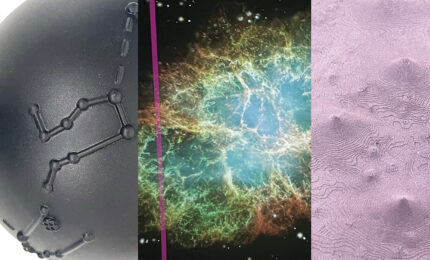Sixty-six million years ago, a gigantic rock measuring several miles wide fell out of the sky and cannonballed into the Gulf of Mexico, in an area known today as the Yucatán Peninsula. The impact and sudden, catastrophic global climate changes it caused are thought to have snuffed out the non-avian dinosaurs along with an estimated three-quarters of all living species of animal and plant on Earth.
In fact, based on fossil evidence, many scientists believe that if it weren’t for this cataclysmic plot twist, placental mammals may never have crawled out of their holes and diversified into all the forms we see today. Without the meteorite, there would be no rats, cats, or bats. No whales or walruses. No hyraxes or howler monkeys. No humans.
But in recent decades, another version of these events has gained steam primarily among scientists who study DNA. According to their models, which are built by measuring things such as rates of evolutionary change, placental mammals were already well on their way to diversifying when the Big One hit. Some models even suggest that the placental mammal family tree had begun to branch out as early as 120 million years ago or more. In this version of prehistory, the meteorite was just another trial the mammals survived—not the one that crystallized our fate.
So, who is right? John Wible intends to find out.
As an anatomist and curator of mammals at Carnegie Museum of Natural History, Wible has had his sights set on constructing an all-inclusive mammal tree of life since he first came to Pittsburgh in 1998. And now, he and a team of researchers from Purdue University Northwest, Duquesne University, and the New Mexico Museum of Natural History and Science, along with collaborators in the United Kingdom, China, and Brazil, have secured a four-year grant of nearly $800,000 from the National Science Foundation to do just that, and more.
“The fact that we’ve got so much information about this animal from so many fossils, or the potential to have so much information about this animal, and we don’t know what it is—that just drives me crazy.”
– John Wible, curator of mammals at Carnegie Museum of Natural History
One of the prime areas of study for Wible and his team will be to learn more about the menagerie of mammals that left behind lots of fossils in the 10 million years following the meteorite strike, an era known as the Paleocene.
Take one of the first large placental mammals of the Paleocene, the Coryphodon. Wible says paleontologists have found Coryphodon fossils all over the Northern Hemisphere, from North America to Europe to Asia. These remains are full of interesting information.
Judging by the fossils, the Coryphodon had a body similar to a hippo, with short, squat legs and tusks on its upper jaw. It probably spent a good bit of its time in water, says Wible, since isotopes in its teeth enamel show that it ate a healthy quantity of aquatic plants. And it’s not believed to have been all that intelligent, with one of the smallest brain-to-body-size ratios found in any placental mammal.
But there’s one important thing scientists don’t know about Coryphodon. “We have no idea what a Coryphodon is,” Wible says. In other words, scientists don’t yet know where the prehistoric creature fits on the mammal family tree.
“The fact that we’ve got so much information about this animal from so many fossils, or the potential to have so much information about this animal, and we don’t know what it is,” says Wible, “that just drives me crazy.”
To unravel this enigma—and ultimately resolve the controversy over the role the meteorite played in the proliferation of placental mammals—the team plans to visit museum and university collections around the world to create detailed inventories of hundreds of mammal species and their traits. It’s the most ambitious study of its kind, with a never-before-attempted focus on the weird Paleocene mammals such as the Coryphodon. The inventories will include everything from the shape of an animal’s bones and the number of vertebrae to the size of its muscle attachments. Not to mention every last detail about its teeth.
“The hardest substance in your body is the enamel on your teeth,” says Wible. This means that many mammals found in the fossil record are only known from a few errant choppers. Especially in these cases, the number, size, and qualities of a tooth can be enormously informative—which is why the scientists will also be painstakingly searching for identifying characteristics such as cusp size, mapped out with micro-CT scans.
Once complete, the team can feed this new information into an algorithm that will then generate a family tree, which Wible hopes will help them connect the dots between the Cretaceous, the last period of the Age of Dinosaurs when molecular geneticists think placental mammals diversified, and the Eocene, when fossils first resembled modern placental mammals—an estimated 10-million-year gap.
“It’s going to be really interesting to see what we find when we combine the data,” says Jan Janecka, an evolutionary geneticist at Duquesne University who will help integrate the molecular and fossil findings in the hope that the two competing theories might meet somewhere in the middle. Until now, says Janecka, the two sides have mostly kept to themselves.
As with any good scientific debate, there are doubters. Mark Springer, an evolutionary geneticist at the University of California, Riverside who is not affiliated with the research project, is squarely in the camp that favors molecular evidence over fossils. While he respects the quality of their work, he doesn’t expect Wible and team to get any closer to solving the question of placental mammal origins. “From my point of view, we don’t have to sort of force the molecular results onto a particular interpretation of the fossil record,” says Springer.
It’s important to note that the study isn’t only about looking into the past, says Michelle Spaulding, an assistant professor of biology at Purdue. The team’s findings may yield important insights about the present and future, too.
“The Paleocene was a time of great climate change, with a lot of areas getting warmer and a lot of areas getting cooler,” says Spaulding, who did her postdoctoral work at Carnegie Museum of Natural History. “We’re already seeing how it’s impacting humanity. Look at all those big, giant hurricanes that keep forming one after another in the Atlantic. We can draw a parallel between the rapid climate change we see in the Paleocene and what might be coming for us.”
What’s more, gaining a better understanding of which mammals survived climate change back then could help us target today’s species most in need of conservation funding.
Pittsburgh area schools will also benefit. Over two years, museum educators will partner with regional classrooms as a way to tweak museum mammal exhibitions to be more relevant to various age groups while also exposing students to a more hands-on approach to paleontology and evolutionary history.
For Wible’s part, he says he’s not really concerned about proving one origin theory over another. He just hopes to be able to fill in enough gaps to tell a new, more informed story about the rise of placental mammals.
If the team should learn what a Coryphodon really is in the process, well, that would be pretty satisfying, too.







